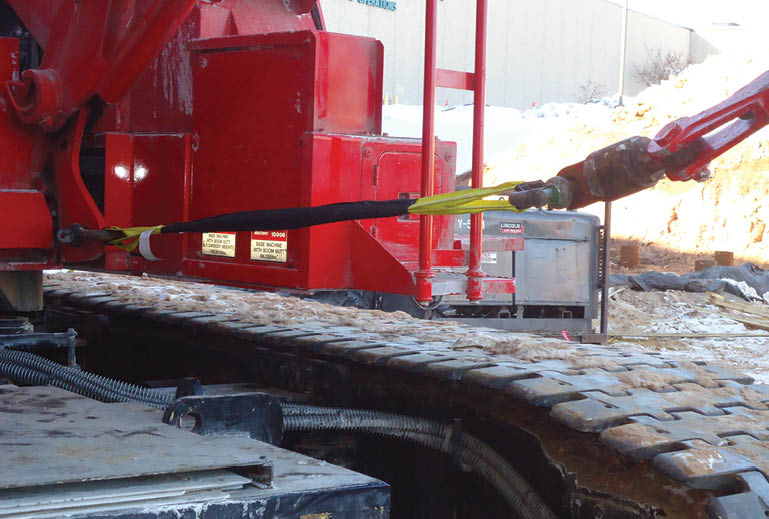
Tied-back lines can cause serious damage and injury. Oftentimes, bridge and foundation contractors use multiple hoisting lines for their cranes on the jobsite. This can potentially pose a problem when the crane is done doing multiple line work, such as pile driving. The operator will secure the lines that are no longer in use back to the superstructure of the crane to get them out of the way.
What can happen next is that as the operator of the crane moves on to normal hook work and then booms down, the tied-back line gets tighter at an unnoticeable pace as the boom tip moves away from the crane. If the operator doesn’t remember to slack the tied-back lines, eventually they will get tight to the laces and can result in damage. More dangerous, as the tension increases, the weakest link – whether a chain or nylon used to tie off, or even the structure where the line is secured – is sacrificed and breaks at an extremely high breaking strength, which then shoots that line and whatever rigging is attached to it up to twice the length of the boom. This also occurs with cranes with high line pull strength, if the operator engages the wrong lever by mistake. Each situation endangers personnel, bystanders and equipment.
Second Chance Line Restraint, LLC offers a line tie-back system that will give the operator and nearby workers a warning; as the features of the strap are deployed, the stitching is heard breaking as well as the tightened line slaps against the boom as the strap reacts, leaving the last component of the strap containing the rigging from flight.
Visit www.secondchancelinerestraintllc.com to learn more. ![]()